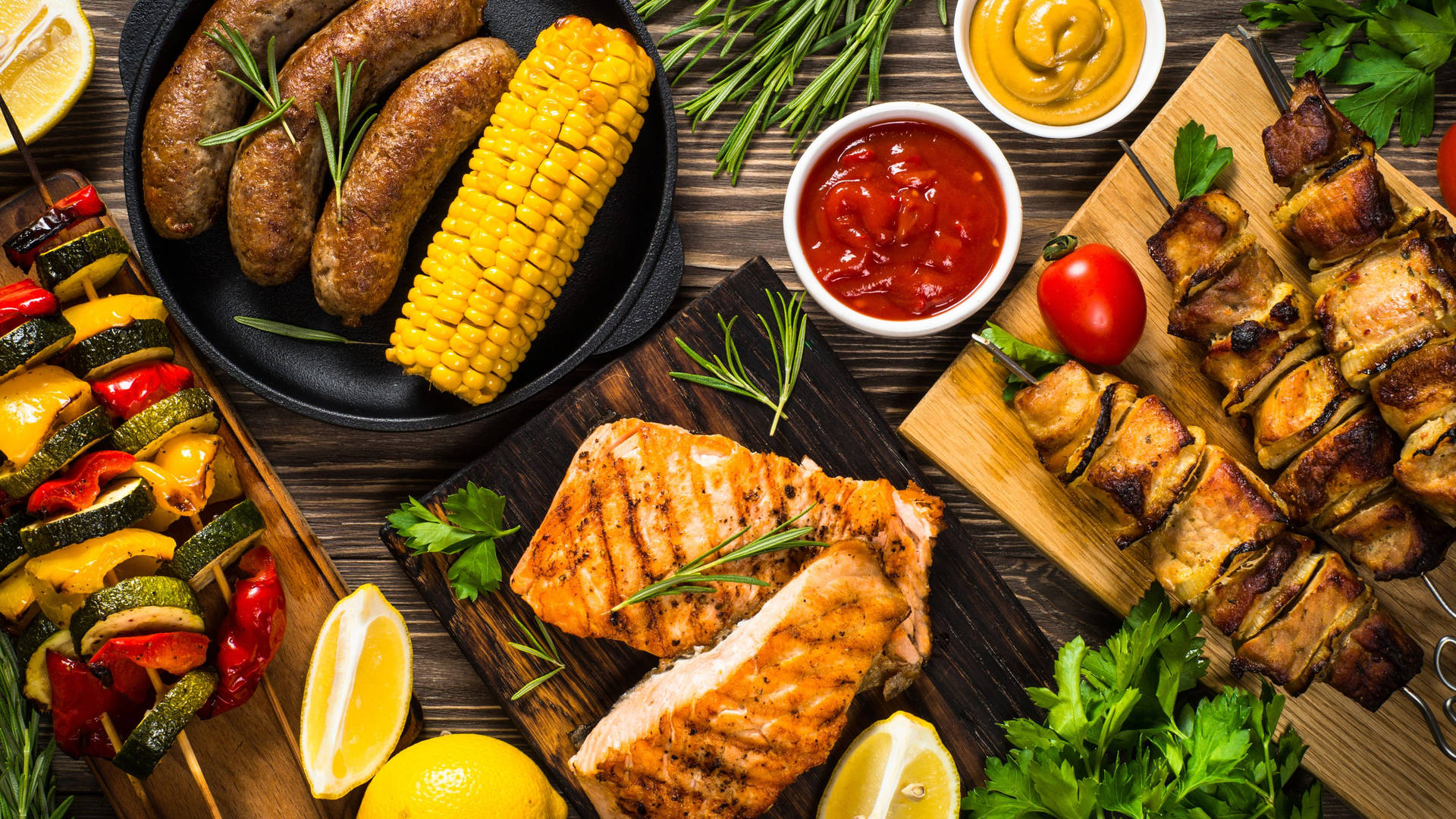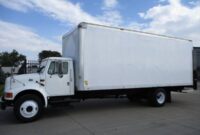Food Truck Shelving: Maximizing Space, Efficiency, and Hygiene on Wheels pickup.truckstrend.com
The aroma of sizzling street food, the vibrant graphics of a mobile kitchen, and the bustling energy of a food truck are all hallmarks of a thriving culinary venture. Yet, behind the scenes, the success of these compact kitchens often hinges on one critical, often overlooked element: food truck shelving. More than just a place to stash supplies, effective food truck shelving is the backbone of operational efficiency, hygiene, safety, and regulatory compliance in a confined, dynamic environment. It transforms chaos into order, allowing chefs to work seamlessly, safely, and swiftly, turning out delicious dishes that keep customers coming back for more.
In the fast-paced world of mobile gastronomy, every inch counts. Shelving isn’t merely about storage; it’s about intelligent space utilization, ergonomic workflow design, and maintaining the highest standards of food safety. This comprehensive guide will delve into the multifaceted world of food truck shelving, exploring its importance, types, considerations for selection, design strategies, and maintenance, ensuring your mobile kitchen is as functional as it is flavorful.
Food Truck Shelving: Maximizing Space, Efficiency, and Hygiene on Wheels
The Indispensable Role of Effective Food Truck Shelving
Imagine a busy lunch rush in a food truck without proper shelving. Ingredients tumble, equipment clutters countertops, and essential tools are nowhere to be found. The result? Slow service, potential health hazards, and a stressed-out crew. This scenario highlights why thoughtful shelving is non-negotiable for any successful food truck:
- Space Optimization: Food trucks are inherently small. Shelving leverages vertical space, freeing up precious counter space for prep and cooking. It allows you to store more in less area, making the most of every cubic foot.
- Workflow Efficiency: A well-organized shelving system places ingredients and tools exactly where they’re needed, minimizing steps, bending, and reaching. This streamlined access accelerates prep times, cooking processes, and ultimately, customer service.
- Safety and Stability: Proper shelving prevents items from shifting, falling, or becoming projectiles during transit. Securely mounted, purpose-built shelving ensures that equipment and ingredients remain stable, protecting both the staff and the food.
- Hygiene and Cleanliness: Shelving designed for food service, particularly NSF-certified options, promotes airflow, prevents cross-contamination, and is easy to clean and sanitize. Keeping food off the floor and in designated, clean areas is crucial for health inspections and customer trust.
- Regulatory Compliance: Health departments have strict rules regarding food storage, equipment placement, and material standards. Appropriate shelving helps food truck operators meet these stringent requirements, avoiding fines and operational shutdowns.
- Inventory Management: When everything has a place, it’s easier to track inventory, identify what needs restocking, and reduce waste. This contributes directly to better cost control and profitability.
- Professional Appearance: An organized, clean kitchen reflects professionalism and attention to detail, instilling confidence in both staff and customers.

Key Considerations Before Choosing Shelving
Selecting the right shelving for your food truck involves more than just picking something off the shelf. It requires careful planning and consideration of several crucial factors:

- Material:
- Stainless Steel: The gold standard for commercial kitchens due to its durability, corrosion resistance, non-porous surface (easy to clean and sanitize), and ability to withstand high temperatures and humidity. It’s an investment but offers longevity and superior hygiene.
- Aluminum: Lighter than stainless steel, making it ideal for reducing overall truck weight. It’s also corrosion-resistant but may not be as robust as stainless steel for very heavy loads or extreme impacts.
- NSF Certification: Always look for shelving that is NSF (National Sanitation Foundation) certified. This certification ensures the material and design meet strict public health and safety standards for food equipment.

- Space and Layout: Measure your truck’s interior meticulously. Consider the placement of major equipment (grills, fryers, sinks, refrigerators) and design shelving around them, ensuring clear pathways and access points.
- Weight Capacity: Determine what you’ll be storing. Heavy items like bulk ingredients, pots, and pans require robust shelving with high weight capacities. Lighter items like spices, paper goods, or cleaning supplies can be stored on lighter-duty shelves.
- Adjustability and Customization: Adjustable shelves allow you to reconfigure storage as your menu or equipment changes. Custom-fabricated shelving can perfectly fit unique spaces or specific equipment needs, maximizing every inch.
- Portability/Mobility: While most food truck shelving is fixed, some operators might opt for small, mobile utility carts or shelving units on casters for specific tasks or to move supplies in and out of the truck. Ensure casters are lockable and heavy-duty if used in transit.
- Cleaning and Maintenance: Shelving should be easy to wipe down, sanitize, and free from crevices where dirt or bacteria can accumulate. Open wire shelving allows for better airflow and easier cleaning than solid shelves in some contexts, though solid shelves prevent spills from dripping to lower levels.
- Budget: While cost is a factor, view shelving as an investment in efficiency, safety, and compliance. Opting for cheaper, non-commercial alternatives can lead to costly repairs, health code violations, or even accidents down the line.
Types of Food Truck Shelving
The diverse needs of a food truck kitchen have led to various shelving solutions, each with its own advantages:
- Wall-Mounted Shelves: These are fixed directly to the truck’s walls, maximizing vertical space. They are excellent for storing frequently used ingredients, small equipment, or prepped items. They can be solid or wire, single or multi-tiered.
- Free-Standing Shelves: While less common for primary storage due to movement during transit, sturdy, well-secured free-standing units (often with leveling feet or bolted to the floor) can be used for bulk dry storage or in specific, less mobile areas. Some come with casters for mobility within a stationary setup.
- Under-Counter Shelves/Drawers: This type of shelving utilizes the often-wasted space beneath work surfaces. They can be pull-out drawers for utensils and small tools or open shelves for storing larger, less frequently accessed items.
- Overhead Shelving/Cabinets: Installed above prep areas or other equipment, these are ideal for lighter items, paper goods, or less frequently used tools. Enclosed cabinets can offer better dust protection.
- Custom-Fabricated Shelving: For unique truck layouts or specialized equipment, custom shelving can be designed and built to perfectly fit the available space, ensuring optimal functionality and integration.
- Slotted/Vented Shelving: Often made of wire, these shelves promote air circulation, which is beneficial for certain food items and helps with drying after cleaning.
- Solid Shelving: Offers a flat, continuous surface, preventing spills from dripping onto items below. Ideal for storing bags of ingredients or items that might leak.
Designing Your Food Truck Shelving Layout
A well-designed shelving layout is akin to a finely tuned engine – everything works in harmony. Here’s a practical guide to planning your shelving:
- Map Your Workflow: Visualize the path of food from delivery to prep, cooking, and serving. Place ingredients and tools near the stations where they’ll be used. For example, spices near the stove, cutting boards near the prep area, and serving containers near the window.
- Prioritize Items: Store frequently accessed items at eye-level or within easy reach. Less common items can go on higher or lower shelves. Heavy items should always be stored on lower shelves for stability and safety.
- Consider Accessibility: Ensure shelves don’t block access to essential equipment, fire extinguishers, or emergency exits. Leave enough clearance for opening appliance doors and for staff movement.
- Account for Ventilation and Airflow: Avoid placing shelves too close to heat-generating equipment (ovens, fryers) without proper ventilation. Good airflow is crucial for food safety and preventing heat buildup.
- Safety and Stability First: All wall-mounted shelves must be securely fastened to the truck’s frame, not just the interior walls. Use heavy-duty fasteners appropriate for a moving vehicle. Consider anti-tip brackets for any free-standing units.
- Regulatory Compliance: Consult your local health department’s regulations. They often specify minimum distances food must be off the floor, material requirements, and cleaning protocols. Design your shelving to meet or exceed these standards.
- Future-Proofing: While custom solutions are great, consider if your menu or equipment might change in the future. Adjustable shelving offers flexibility.
Installation, Maintenance, and Longevity
Even the best shelving system will fail if not properly installed and maintained.
- Professional Installation: Given the unique challenges of a moving vehicle, it’s highly recommended to have shelving professionally installed by someone experienced in food truck or vehicle upfitting. They will know how to securely fasten units to withstand vibrations and movement.
- Regular Cleaning: Implement a strict cleaning schedule. Wipe down shelves daily with food-safe sanitizers. For stainless steel, avoid abrasive cleaners that can scratch the surface. For wire shelving, ensure all nooks and crannies are cleaned.
- Inspections: Periodically inspect all shelving units for signs of wear, rust, loose bolts, or damage. Tighten any loose fasteners immediately.
- Loading Best Practices: Distribute weight evenly across shelves. Do not exceed the manufacturer’s stated weight capacity. Avoid stacking items too high, which can create a tipping hazard.
Overcoming Common Shelving Challenges
- Limited Space: Embrace multi-functional shelving (e.g., a shelf that doubles as a small prep surface). Explore collapsible or modular systems. Custom-fabricated solutions are often the best answer for truly unique or tight spaces.
- Vibration and Movement: This is perhaps the biggest challenge. Use heavy-duty fasteners, anti-slip mats on shelves, and possibly even bungee cords or locking bars for items that are prone to shifting during transit.
- Temperature Extremes: Ensure your shelving material can withstand the fluctuating temperatures inside a food truck, especially near cooking equipment. Stainless steel is generally the most resilient.
- Hygiene Compliance: Choose NSF-certified materials and designs that are easy to clean. Avoid open wood shelving or materials that can absorb moisture and harbor bacteria. Ensure items are stored off the floor as per health codes.
Food Truck Shelving Price Table
The cost of food truck shelving varies significantly based on material, size, type, and whether it’s custom-fabricated. While this table provides estimated ranges, always obtain specific quotes from suppliers for accurate pricing.
| Shelving Type | Material Options | Key Features | Estimated Price Range (per linear foot or unit) |
|---|---|---|---|
| Wall-Mounted Shelves | Stainless Steel, Aluminum | Fixed, high weight capacity, space-saving | $50 – $200 (per linear foot) |
| Free-Standing Units | Stainless Steel, Aluminum | Multi-tiered, heavy-duty, can be mobile (casters) | $150 – $800 (per unit, 3-5 tiers) |
| Under-Counter Shelves | Stainless Steel, Aluminum | Utilizes wasted space, often custom fit | $100 – $300 (per linear foot/drawer) |
| Overhead Cabinets | Stainless Steel, Aluminum | Enclosed or open, lighter items, dust protection | $200 – $600 (per linear foot/unit) |
| Custom Fabrication | Stainless Steel, Aluminum | Tailored to specific dimensions and needs | $100 – $400+ (per linear foot, highly variable) |
| Specialty Inserts | Stainless Steel, Polyethylene | Pot racks, spice racks, utensil holders | $30 – $150 (per insert/accessory) |
Note: Prices are estimates and can vary based on supplier, gauge of steel, finish, and complexity of design. Installation costs are typically separate.
Frequently Asked Questions (FAQ)
Q1: What material is best for food truck shelving?
A1: Stainless steel is widely considered the best due to its durability, corrosion resistance, ease of cleaning, and hygiene properties. Aluminum is a lighter, good alternative, especially where weight is a primary concern. Both should ideally be NSF-certified.
Q2: Is NSF certification really necessary for food truck shelving?
A2: While not always explicitly mandated by every local health department for every piece of shelving, NSF certification ensures that the shelving meets rigorous public health and safety standards. It guarantees the material is food-safe, non-porous, and easy to clean, which is crucial for compliance and peace of mind. It’s a strong recommendation for any commercial food operation.
Q3: How do I secure shelving in a moving food truck?
A3: Shelving must be securely bolted directly to the truck’s structural frame using heavy-duty fasteners, not just the interior walls. Professional installation is highly recommended. For items on shelves, consider using anti-slip mats, bungee cords, or custom-fitted dividers to prevent movement during transit.
Q4: Can I use residential shelving in my food truck?
A4: No, residential shelving is generally not suitable for a food truck. It’s not designed to withstand the vibrations and movement of a vehicle, may not meet health code material requirements (e.g., often made of particle board or non-commercial grade steel), and typically lacks the durability and sanitation features required for a commercial kitchen.
Q5: How often should I clean my food truck shelving?
A5: Shelving should be cleaned and sanitized daily, especially surfaces that come into contact with food or food containers. A deeper clean, including checking for debris in crevices and inspecting fasteners, should be performed weekly or bi-weekly depending on usage.
Conclusion
Food truck shelving is far more than a storage solution; it is a fundamental component of a successful mobile culinary operation. By thoughtfully selecting materials, designing efficient layouts, ensuring proper installation, and maintaining rigorous cleaning protocols, food truck owners can transform their compact spaces into highly efficient, hygienic, and safe kitchens. Investing in quality, purpose-built shelving is not an expense but a strategic decision that directly impacts workflow, compliance, and ultimately, your food truck’s profitability and reputation. Plan wisely, equip smartly, and watch your mobile kitchen thrive.



